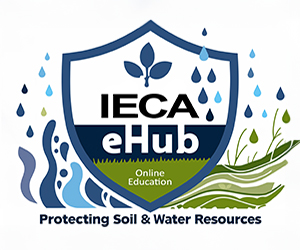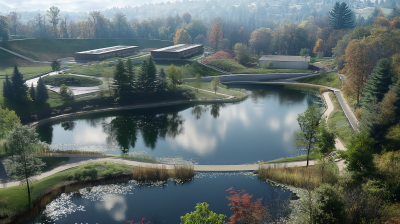
Sustainable Soil Health Through Innovation
Recorded On: 2022/08/04
-
Register
- Non member - $40
- Professional member - $15
- Professional Plus member - Free!
- Professional Plus Org member - Free!
- Student member - $15
- Young Professional member - $15
- Emeritus member - $15
- Discounted Professional member - $15
- Australia Member - $15
- Australia Non-Member - $40
- Australasia Professional Plus - Free!
- Australasia Professional Plus Org - Free!
- Australian Student - $15
Sustainable Soil Health Through Innovation

Healthy soil is the foundation of all civilizations. One of the most diverse habitats on earth—and one of the planet’s largest reservoirs of carbon—healthy soil is crucial for clean and abundant water supplies, and a stable climate. As Franklin Delano Roosevelt once said, “The nation that destroys its soil, destroys itself.” This webinar series looks at innovative ways to build soil health for long-term sustainability.
We Need to Stop Treating Soil like Dirt
Presented by: Alison Price, Managing Director - SoilCyclers
Level: Beginner | Intermediate | Advanced
Duration: 1 hour
Type of Course: On-Demand
Recycling is a good thing, it keeps garbage out of landfill, reduces the need for virgin materials, and reduces the cost of energy to transform base materials into usable products. Whilst most of the environmental debate centres around our disposable lifestyles, we continue to be bombarded with “greenwash” with no real solutions. Soil is known as the “factory of life”. Our economy and society depend on the health of our soil. Not only does it support plant life for food, but it also produces the fibres we use for clothing, maintains the quality and supply of our water, and can act as carbon storage. One teaspoon of high-quality soil contains billions of bacteria; a storehouse for potential antibiotics of the future. What is profoundly disturbing however is that for all our reliance on soil, it is not considered a renewable resource even though it can take over 500 years to generate just one inch of topsoil. Today, we dump millions of tonnes of soil in landfill every year and no one is asking the simple question, why? A drive down the coastline of Queensland and New South Wales shows the devastating effect of the recent floods. Once pristine farmland has been destroyed, stripped topsoil is prevalent, rivers are full of silt and distraught communities are wondering how to make ends meet. So, what do we need?
Using Innovative Beneficial Microbe Technology to Increase Soil Carbon for Successful Rehabilitation and Erosion Control
Presented by: Paul J. Storer, Consultant Microbiologist and Director of R&D - Troforte Innovations
Level: Beginner | Intermediate | Advanced
Duration: 1 hour
Type of Course: On-Demand
Plants and beneficial soil microbes can benefit from each other and work synergistically to help each other survive and thrive. Plants for example provide the microbes with carbon sugars derived from photosynthesis, and these carbon sugar exudates are a preferred food source of microbes. In exchange for these carbon sugars, the microbes provide essential nutrients (and water) back to the plants.
The key to working with Microbes in any revegetation/rehabilitation project and in any soil Is to condition the soil so beneficial microbes can thrive. In this presentation, we will discuss how we have developed regenerative rehabilitation programs and learned to take a slightly different approach to conventional agronomy - where their focus is primarily on the physical and chemical properties of soil and on adjusting pH to ~6.5(+/-) - so that water soluble fertilisers can feed plant available NPK directly to the establishing plants. This conventional approach often requires large inputs of soil conditioners like Lime, Gypsum, and Compost to correct and adjust pH, flush sodium, etc. This approach can be expensive and in our opinion can increase the potential risks of failure - particularly if you do not get the rains in a timely fashion that activates these types of soil conditioners. Maintenance can also become expensive and very time consuming.
Sustainable, Maintenance-Free Growth in Poor Quality Topsoil
Presented by: Paul Clarke, B.Sc (Eng), MIEAust, CPEng (Retired) Managing Director - Valley Hydramulch & Revegetation
Level: Beginner | Intermediate | Advanced
Duration: 1 hour
Type of Course: On-Demand
How do we get the grass established and maintain growth the way we want it to? What can be done to establish sustainable growth without reworks? These are two questions that most project managers are faced with, to determine if the methodology they are using will meet the requirements of practical completion on large-scale projects with poor quality topsoils. The simple solution is to use a product that is tailored to the site conditions. This is achieved by testing the soil to determine the requirements and incorporating these into the grassing application.
These applications are designed to ameliorate the soils in-situ, addressing the deficiencies in the soil, and providing the nutrients required to kickstart germination and sustain growth over longer periods. Except for extended dry periods, these applications are maintenance-free, laying dormant until adequate rainfall arrives, as well as ameliorating with the top-down approach. This allows for nutrients to penetrate through the soil profile as the root systems develop. But why can’t you use a standard application you ask?

Hosted by:

Alison Price
Managing Director
SoilCyclers
Alison is the Founder and Managing Director of SoilCyclers, mobile soil recycling, decontamination, amelioration and waste reduction contractors working across the construction, waste and mining industries. SoilCyclers is on a mission to create a bigger future with a smaller footprint by transforming waste into safe, reusable materials.
Each year, Alison oversees recycling projects on more than 50 sites, recycling up to half a million cubic metres of material, saving clients more than $5 million, taking almost 30,000 truckloads off local roads and reducing greenhouse gas emissions by around 6000 tons.
Alison is also a board member for Austmine, EnviroMETS (Qld) Ltd and the Infrastructure Sustainability Council. She is a former Queensland Chapter President, Director and Vice Chair of the National Association of Women In Construction (NAWIC).
Paul Storer
Consultant Soil Microbiologist
Envirostraw
Paul Storer MSc, CPAg, FAA is the Senior Consultant Soil Microbiologist at EnviroStraw. With over 44 years of experience in soil science research, regenerative land rehabilitation and farm management, Paul bridges the gap between academic research and real-world industry application. He specialises in developing practical, science-based programs and technologies that restore biological function to depleted and disturbed soils, improve erosion control, and build stable soil carbon.
Paul works closely with rehabilitation teams, contractors, and land managers across Australia to deliver effective, resilient, and sustainable outcomes that align with both environmental priorities and emerging ESG performance expectations.
Paul Clarke
Managing Director
Valley Hydramulch & Revegetation
Degree in Civil Engineering, University of Newcastle1970
Completed Coursework for Master Eng Sc (Environmental Engineering) 1976
MIE Aust NPER 3 Civil and Structural Colleges
Principal of Civil Engineering Consulting Practice 1976 to Present
Manager/Owner of Valley Hydramulch & Revegetation since 1981
IECA member since 2010
Education Presenter at IECA Conferences since 2015
This program offers 3 Professional Development Hours. Each webinar is worth 1 Professional Development Hour.



